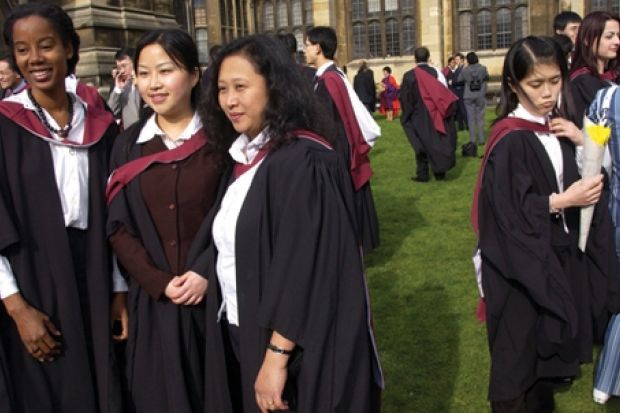Massive increases in overseas recruitment by UK universities mean it is now the norm for at least 15 per cent of their students to come from outside the country.
A report published this week by the Higher Education Policy Institute says that only 61 British institutions had passed this threshold in 1996-97, whereas in 2009-10 it was 102, well over half the total.
The average proportion of non-UK students in each institution has increased by half in the same period to 21 per cent - fuelled by a rise in non-European Union students.
The findings are cited in the report - Institutional Diversity in UK Higher Education - as an example of how university missions have converged over the past decade.
Among other evidence is the increasing provision for postgraduates, with only one UK institution without such students in 2009-10, as opposed to five in 1994-95.
Hepi also highlights a decline in the number of universities appearing to require top grades from students.
In 2004-05, 50 institutions admitted first-year first-degree students with an average points score equivalent to AAB or above at A level.
By 2009-10, this had fallen to 44 universities.
But the report says that despite apparent convergence on some measures and a fall in the number of providers, especially specialists, there has not been a huge decline in the academy's diversity.
"It can be argued that the higher education sector is less diverse than it was previously," it states.
"But the changes are marginal - there are still a large number of institutions that have differing characteristics and do different things."
The report, published on 26 January, says that despite marked changes in the "balance of subject provision" of undergraduate courses - especially a decline in science and a rise in some arts and humanities subjects - these had generally matched changes in demand.
One exception is mathematics, where rising demand has outstripped falling supply.
Overall, the study finds that from 1994-95 to 2009-10, the total number of higher education institutions in the UK fell from 183 to 165, although the drop concealed an increase in further education colleges and private providers entering the sector.
There were 40 institutional mergers over the period, with a net decrease of three general institutions and 14 specialists.
However, the report's author, higher education consultant Brian Ramsden, said these were "comparatively minor changes" in the diversity of the sector and could be "overshadowed" by developments caused by the "growing market pressures" currently being brought to bear on institutions.
